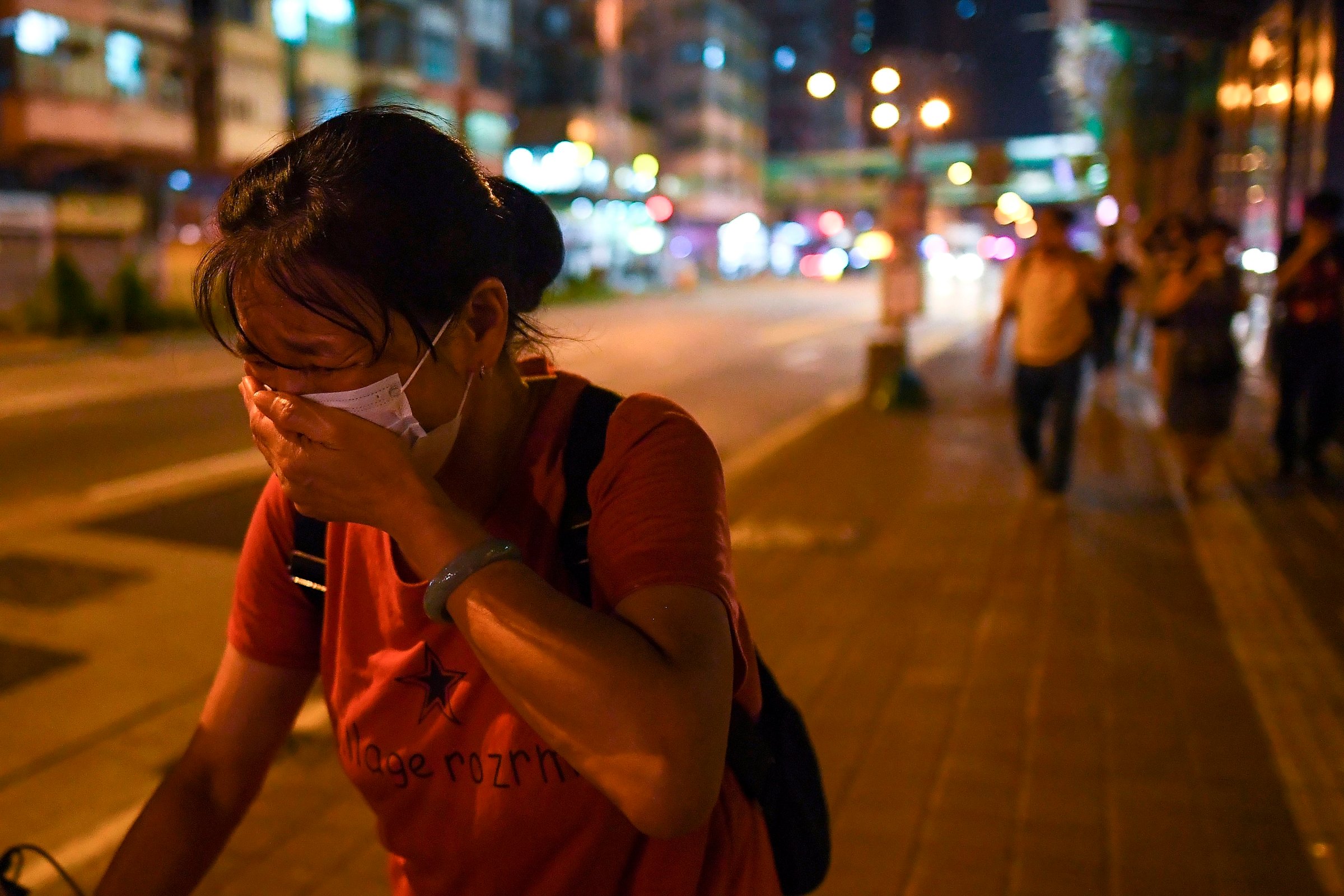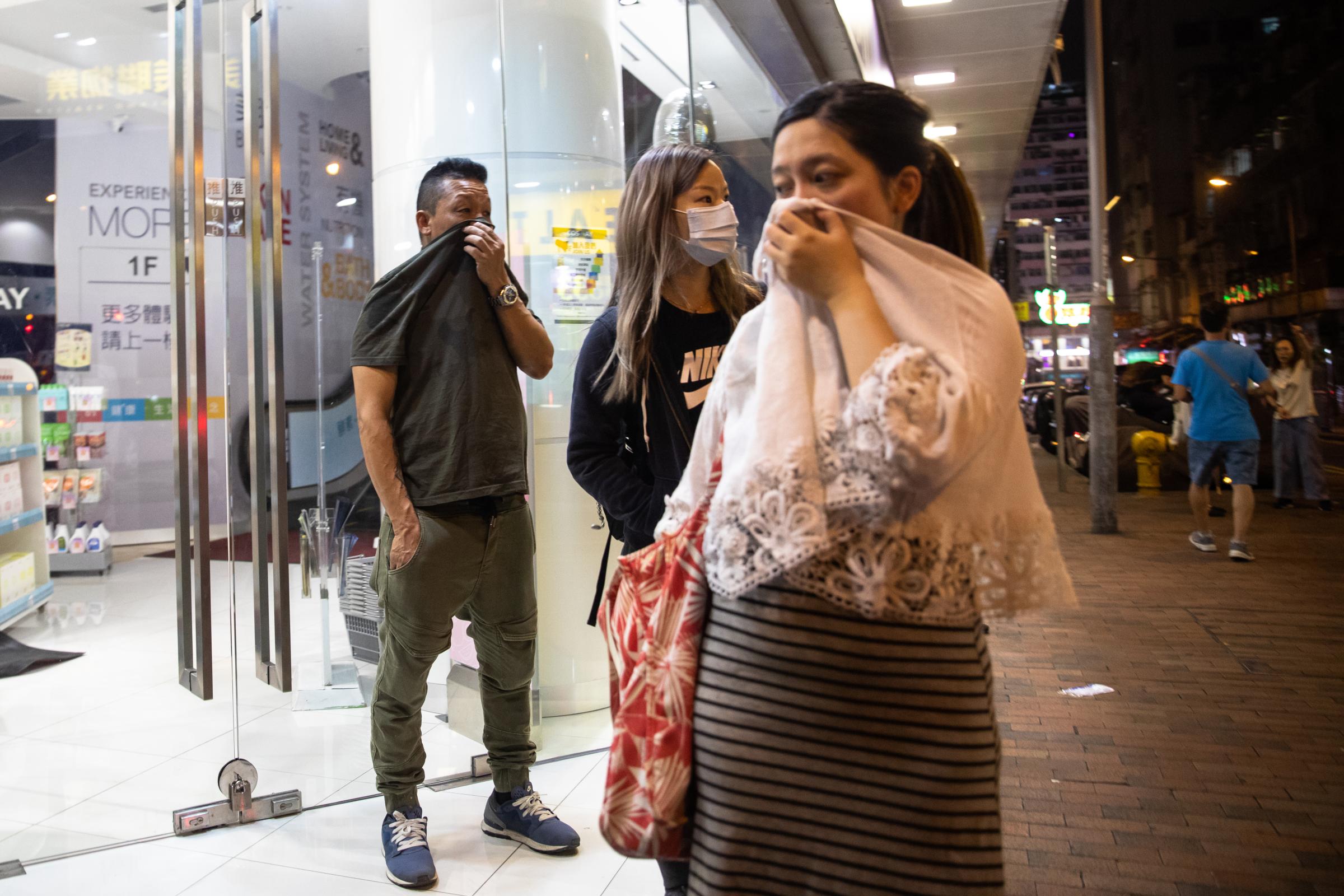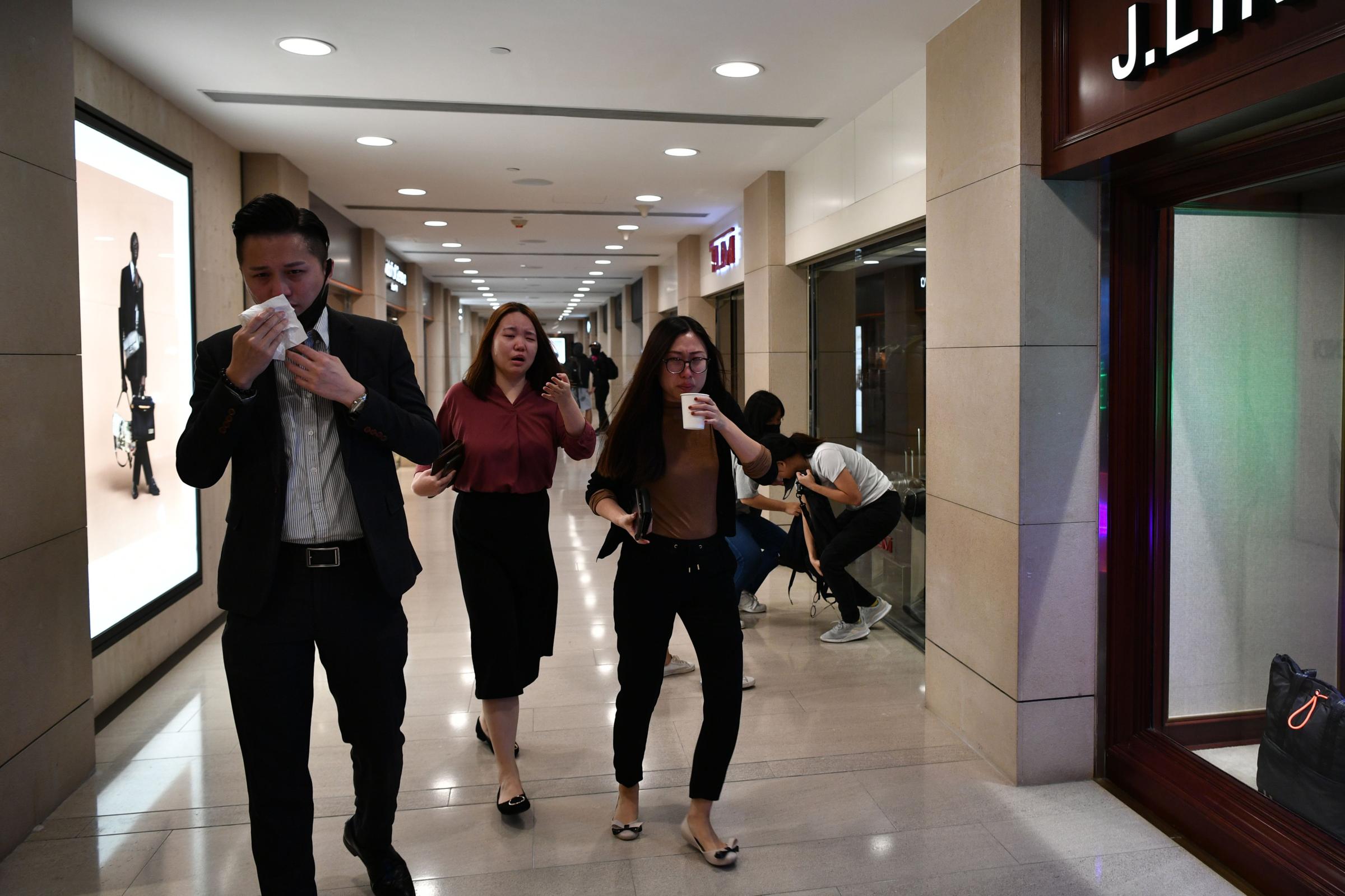
It’s 10 a.m., and Ms. Chan has only sold two bunches of bananas and half a pound of cherries from the fruit stand she runs at a suburban produce market. It’s not much to show for two hours of trading. Around her, the normally raucous vendors are silent.
“Actually, it’s already better now,” the 58-year-old says. “Last week, we barely saw a soul.”
Chan works at the market in Sheung Shui, an area in northern Hong Kong. In November, the district’s center — where the market, a sprawling park, a library, and shopping malls are clustered — was wreathed in tear gas for five consecutive days as police fought running battles with anti-government protesters.
Tear gas was fired up to the second floor of the market, sparking fears that produce would be contaminated. Local Facebook groups blew up with comments from concerned residents who said they wouldn’t be shopping there for at least a month.
“My regular customers say they don’t trust the food at the market anymore,” says Chan, who estimates that her takings have fallen by a third.
Anti-government protests have raged in Hong Kong for almost six months and, according to official figures, around 10,000 rounds of tear gas have been fired. Financial districts, tourist hot spots and, on occasion, shopping malls and subway stations, have all been shrouded in it.
“When I’m with my son, I avoid walking through places that have been teargassed,” says Mrs Tse, 42. “I would rather we take a detour so we aren’t exposed to the second-hand effects.”

Known also as CS gas, tear gas is not actually a gas, but fine powder used as a riot control agent. It becomes active when heated. Exposure causes streaming eyes, runny nose, shortness of breath, burning skin and sometimes vomiting and headaches.
Lately, Hong Kong has been abuzz with concerns about the long term effects of tear gas exposure and any potential harm to the built environment caused by repeated tear gas contamination.
Fears have been exacerbated by the police force’s switch to mainland Chinese-made tear gas. Experts say it contains aluminum and magnesium, causing it to burn at higher temperatures than the U.S.- and U.K.-made tear gas used previously.
Many residents believe that this means there is higher likelihood of dioxins being released when the tear gas is discharged. Some parents are even limiting how much time their children spend outdoors, fearing exposure to tear gas residue in streets and parks.
Dioxins can be stored in the body for up to 11 years and, according to the U.S. National Institute of Environmental Health Sciences, can cause “developmental problems in children, lead to reproductive and infertility problems in adults, result in miscarriages, damage the immune system, and interfere with hormones.”
Sven-Eric Jordt, an associate professor at Duke University School of Medicine, acknowledges that there are no scientific studies to prove the link between tear gas and dioxins, but understands why the public is anxious.
“Tear gas is a chlorinated organic chemical. When chlorinated organic chemicals are burned at high temperatures, dioxin can be produced,” Jordt tells TIME. “The China-made tear gas cartridges have caused severe burn injuries and even melted the asphalt of the roads.”
David Hui, a respiratory medicine expert at the Chinese University of Hong Kong, is more skeptical. The production of dioxin is “theoretically possible,” but the short combustion time of the tear gas makes it not as likely as believed, he argues.
“There needs to be sustained heating in order to decompose the [tear gas] into dioxin,” Hui tells TIME. “But the ignition [when tear gas is fired] lasts only for 20 or 30 seconds to a minute. So we cannot be sure that dioxin is produced.”
Parents keeping their children indoors, he adds, could be overreacting. Tear gas particles settle on the ground and become inactive in around five days due to air diluting their concentrations.
Still, to calm public anxiety and advise doctors how to treat patients, Hui has been urging the government to disclose the components of China-made tear gas. The territory’s health secretary Sophia Chan has declined such requests, saying that the information is “sensitive.” Police have also countered claims that tear gas is creating a public health risk, saying that more harmful chemicals are released into the air when protesters set fire to barricades and commit acts of arson.

The use of tear gas in civilian policing has grown in recent decades. In the U.S., tear gas was deployed to quell protests in Ferguson, Mo. in 2014, and has also been used at the U.S.-Mexico border. The non-lethal weapons market is registering a boom in demand for tear gas.
For law enforcement, tear gas is preferred because its worst effects wear off within half an hour, and it causes far fewer injuries than other non-lethal options such as batons, rubber bullets and water cannon.
But many say the use of tear gas in Hong Kong, a tightly populated city of seven million, poses additional risk. Closely packed buildings stagnate air flow and inhibit the dispersion of particles. Narrow streets mean it is difficult for people to escape to fresh air. Those living in apartments above regular protest spots have become accustomed to tear gas wafting into their homes.
Last month, several schools near where tear gas was fired suspended classes — some for as long as a week — for deep cleaning, hiring professionals to get rid of any lingering residue. A major hospital replaced the air filters of its ventilation system and was thoroughly cleaned after patients and staff reported feeling unwell due to the tear gas nearby. Two museums close to a university that was under siege were also shut for more than a week.
Legislator Kwok Ka-ki says he has asked the government to carry out thorough cleaning and chemical testing in public places where tear gas has been used. But his requests have been turned down.
“Can you believe it, that the bureau responsible for our city’s health is refusing to do this?” Kwok says. “It is shameful and irresponsible.”
Kwok, also a practicing doctor, says his colleagues have seen more patients in recent months with respiratory problems, rashes and other reactions that could be linked to exposure to tear gas. Since the particles are heavier than air, they sink to the ground or settle on low surfaces, so children — due to their smaller stature — are most at risk.
Many parents of children with skin conditions say they are paying more visits to the clinic.
One mother, who asked to go by her surname Lee, says her seven-year-old daughter’s eczema has worsened recently. The daughter goes to a school in Jordan, a district that last month was the site of heavy clashes between protestors and police.
Mrs Lee suspects that tear gas residue is aggravating her daughter’s condition. On some nights, she says, the child’s skin is so itchy she scratches herself until she falls asleep exhausted.
“For us parents who only want the best for our kids, it’s a nightmare,” Mrs Lee says. “I don’t care about politics. I just want this to end.”
More Must-Reads from TIME
- Why Biden Dropped Out
- Ukraine’s Plan to Survive Trump
- The Rise of a New Kind of Parenting Guru
- The Chaos and Commotion of the RNC in Photos
- Why We All Have a Stake in Twisters’ Success
- 8 Eating Habits That Actually Improve Your Sleep
- Welcome to the Noah Lyles Olympics
- Get Our Paris Olympics Newsletter in Your Inbox
Write to Hillary Leung / Hong Kong at hillary.leung@time.com